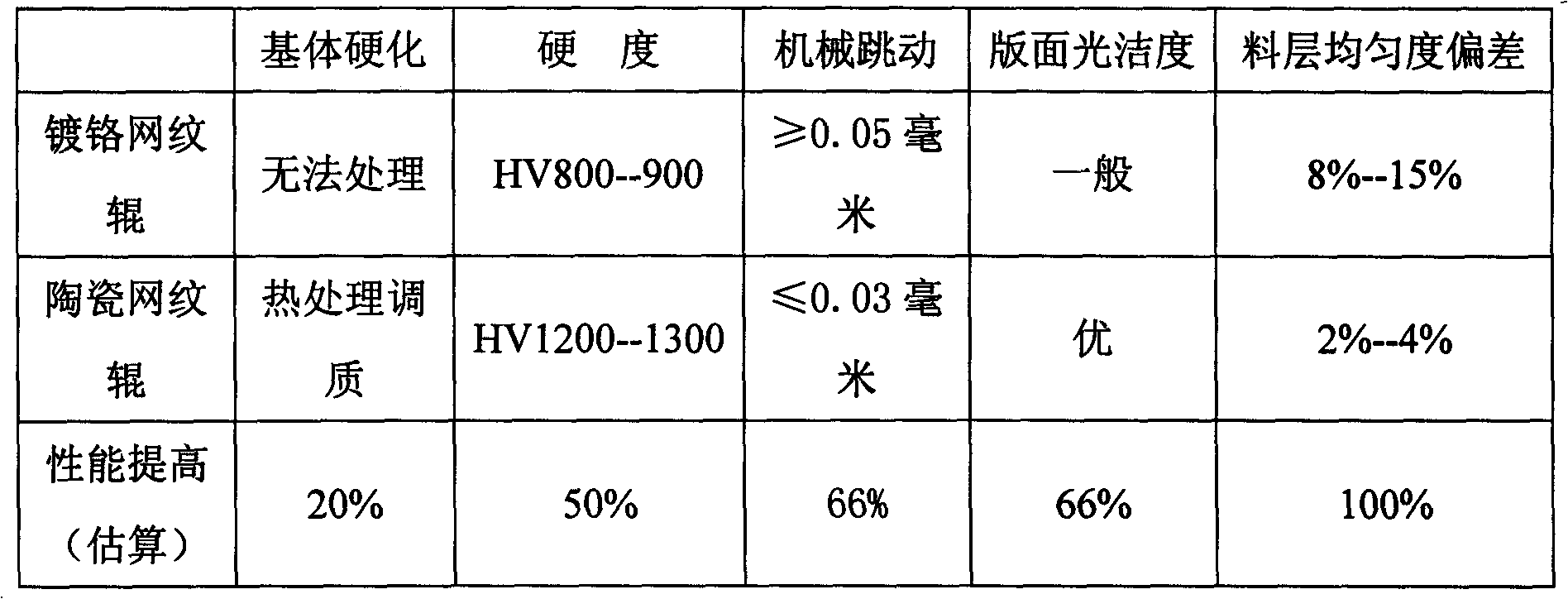Ceramic anilox roller used for optical thin film printing
A technology of optical film and ceramic mesh, which is applied in printing, general parts of printing machinery, printing machines, etc., can solve the problems of large uniformity deviation of finished film material layer, poor wear resistance, large mechanical beating range, etc.
- Summary
- Abstract
- Description
- Claims
- Application Information
AI Technical Summary
Problems solved by technology
Method used
Image
Examples
Embodiment Construction
[0008] The ceramic anilox roller for optical film printing of the present invention hardens the matrix through heat treatment and tempering, and its surface hardness reaches HV1200-1300. The anilox of the ceramic anilox roller is directly engraved by a 500-watt fiber laser engraving machine. The anilox shape of the ceramic anilox roller is a line dot at a certain angle to the roller surface. By using the ceramic anilox roller of the present invention, the problems of wear resistance, mechanical precision, printing ink rejection and uneven material layer of the original chrome-plated roller are improved.
[0009] The performance comparison of the ceramic anilox roller of the present invention and the chrome-plated anilox roller of the prior art is as shown in table 1:
[0010] Table 1
[0011]
[0012] Note: The chrome-plated roller uses the extrusion method to process the dots, and the extrusion processing cannot be performed after the substrate is treated.
[0013] From...
PUM
| Property | Measurement | Unit |
|---|---|---|
| hardness | aaaaa | aaaaa |
| hardness | aaaaa | aaaaa |
Abstract
Description
Claims
Application Information
 Login to View More
Login to View More - R&D
- Intellectual Property
- Life Sciences
- Materials
- Tech Scout
- Unparalleled Data Quality
- Higher Quality Content
- 60% Fewer Hallucinations
Browse by: Latest US Patents, China's latest patents, Technical Efficacy Thesaurus, Application Domain, Technology Topic, Popular Technical Reports.
© 2025 PatSnap. All rights reserved.Legal|Privacy policy|Modern Slavery Act Transparency Statement|Sitemap|About US| Contact US: help@patsnap.com

